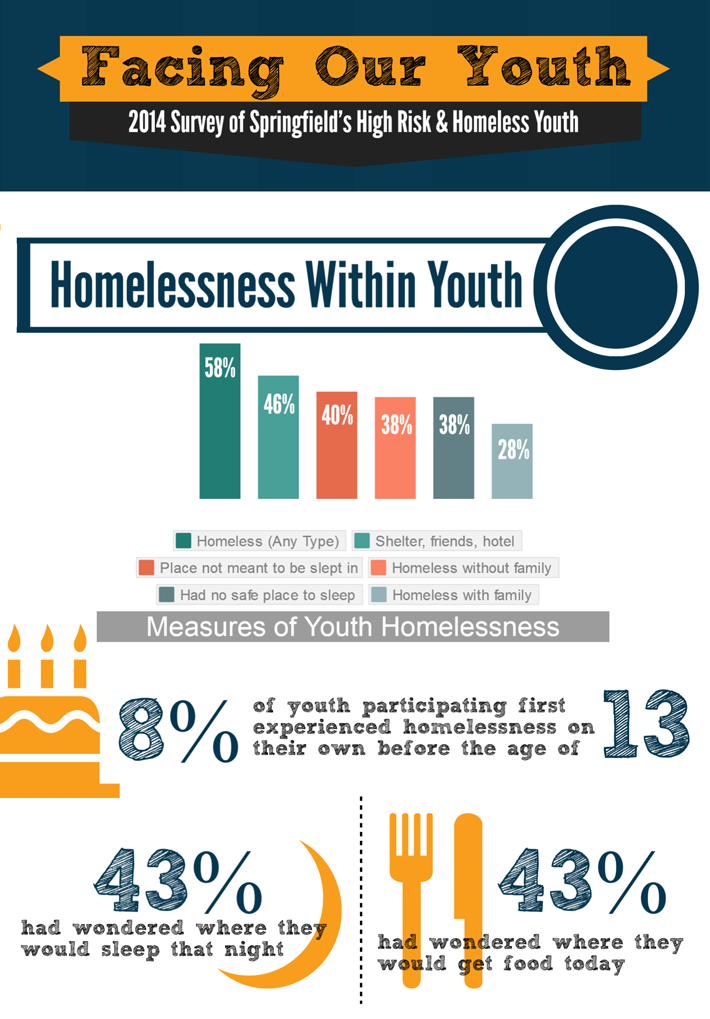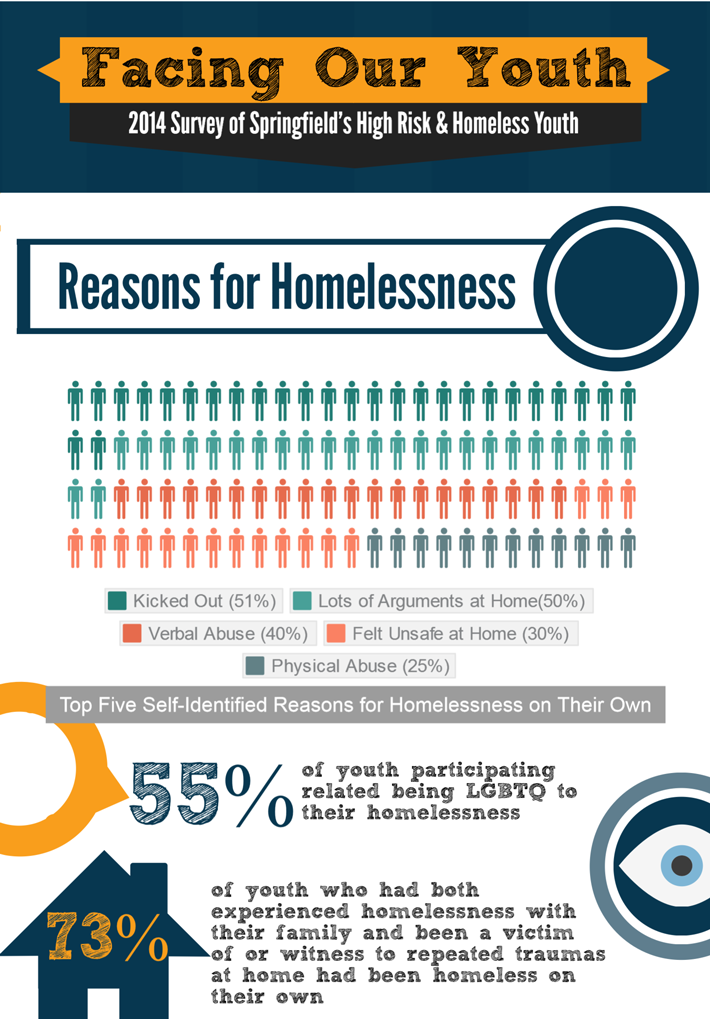This week’s infographic, published by Community Partnership of the Ozarks, presents findings from a survey conducted among high risk and homeless youth living in Springfield, Missouri.
Researchers found that 43% of participants had wondered where they would get food from on the day of the survey. The food access problems faced by youth in Springfield are not so far away from the problems faced by youth living in major Canadian cities. A recent study, which looked at charitable food services offered in Victoria, Edmonton, Toronto, Quebec City, and Halifax found that 96% of homeless youth interviewed did not have access to enough food in the past month. The same survey found that barriers to food access were so severe that many went without food for an entire day or more. Opportunities for youth to provide feedback about their experiences with food assistance programs are of the utmost importance for municipalities that have an interest in making improvements to the status quo. Youth living on the streets, more than anyone else, are aware of the challenges they face with food accessibility.
Many youth find themselves living in homelessness because of relationship difficulties in the home setting. Once on the streets, these youth often find themselves at increased risk of being the victim of physical and sexual violence. According to the National Sexual Violence Resource Center in the United States, 21-42% of homeless youth report being the victim of sexual abuse. When interpreting the previous figure, it’s important to consider that many assaults go unreported. Accordingly, the incidence of violence crime against homeless youth may be far higher than the above figures suggest.
Early interventions into the lives of youth entering homelessness can be understood as a preventative measure against chronic homelessness. Preventive approaches to youth homelessness have seen measured success abroad. A common strategy for youth who have become homelessness is a family reconnection case management approach which focuses on resolving conflicts between young people who have left home and their caregivers. Respite accommodation can provide young people with safe high quality accommodation for a short period of time when young people are fleeing family conflict. An evaluation of a respite accommodation program operating in Birmingham (UK) found that 78% of youth who used respite accommodation services returned home after just two weeks.
This post highlights just a few of the many difficulties that homeless youth have to deal with. The stress associated with finding a safe shelter to sleep and rest in every night is overwhelming. The chronic stigma associated with being homeless may push youth to unhealthy coping mechanisms, including drug abuse. Homelessness has been recognized as an independent predictor of injection drug use among street-involved youth. When we consider the many challenges and disadvantages that youth face as a direct result of becoming homeless, it’s clear that more needs to be done for street-involved youth. Limited funding for existing services and a lack of service accessibility directly contributes to poor outcomes for these youth and their communities.



